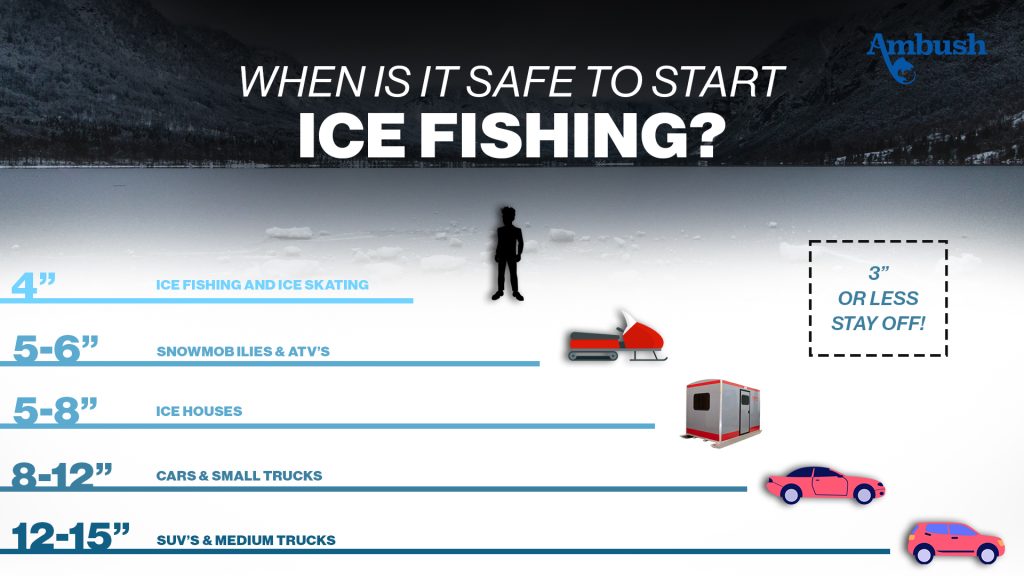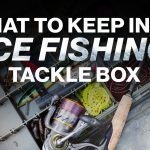Safe Ice Thickness for Ice Fishing
If you are anything like us, when the water freezes, you want to spend as much time ice fishing as you can. Making the most of your season by getting out on the ice early and staying late is important, but so is being safe by knowing the proper ice thickness for fishing. The shelter you are ice fishing in plays a big role in how thick the ice needs to be. For example, if you are fishing in our lightweight Stryker or Slayer Skid House, you can get out on the ice sooner than people with larger (and heavier) wheelhouses. Below is our safety guide of ice thickness for ice fishing – Always check the ice thickness before ice fishing!
General Rule of Ice Thickness for Ice Fishing
As a general rule, the ice should be at least 4 inches thick. At 4 inches of clear ice, you can walk on the ice. If the ice is cloudy, you need 6 inches to walk on it. As you bring more gear with you, the ice also needs to be thicker. At 5 inches of clear ice, you can take a snowmobile or ATV. Between 5-8” is when you can start using a skid house like the Stryker or Slayer on the ice. When the ice gets to 8-12 inches you can take a car or small pickup. Finally, at 12-15 inches of clear ice, you can take a full-sized pickup.
Start and End of the Season
Remember, the ice is always dangerous, but it is more dangerous at the start and end of the season. The weather changes can cause poor ice conditions all season long, but it is more common in the first and last weeks. These few weeks can have dramatic temperature swings that cause the ice to freeze then thaw. This weakens the ice and will decrease the ice thickness.
Never Let Your Guard Down
Keep in mind that just because part of the lake has a safe ice thickness, does not mean it all does. Springs, current, or weed growth can change the ice thickness drastically. The condition of the ice can deteriorate in an extremely short period of time so make sure to pay attention when walking or driving a UTV. You need to stop often to check the ice thickness with a spud bar. You should also make sure that everyone on the ice knows what to do in case you fall through the ice. Never assume the ice thickness is safe for ice fishing – ALWAYS VERIFY. As always, contact your DNR for more information about the ice conditions near you.




